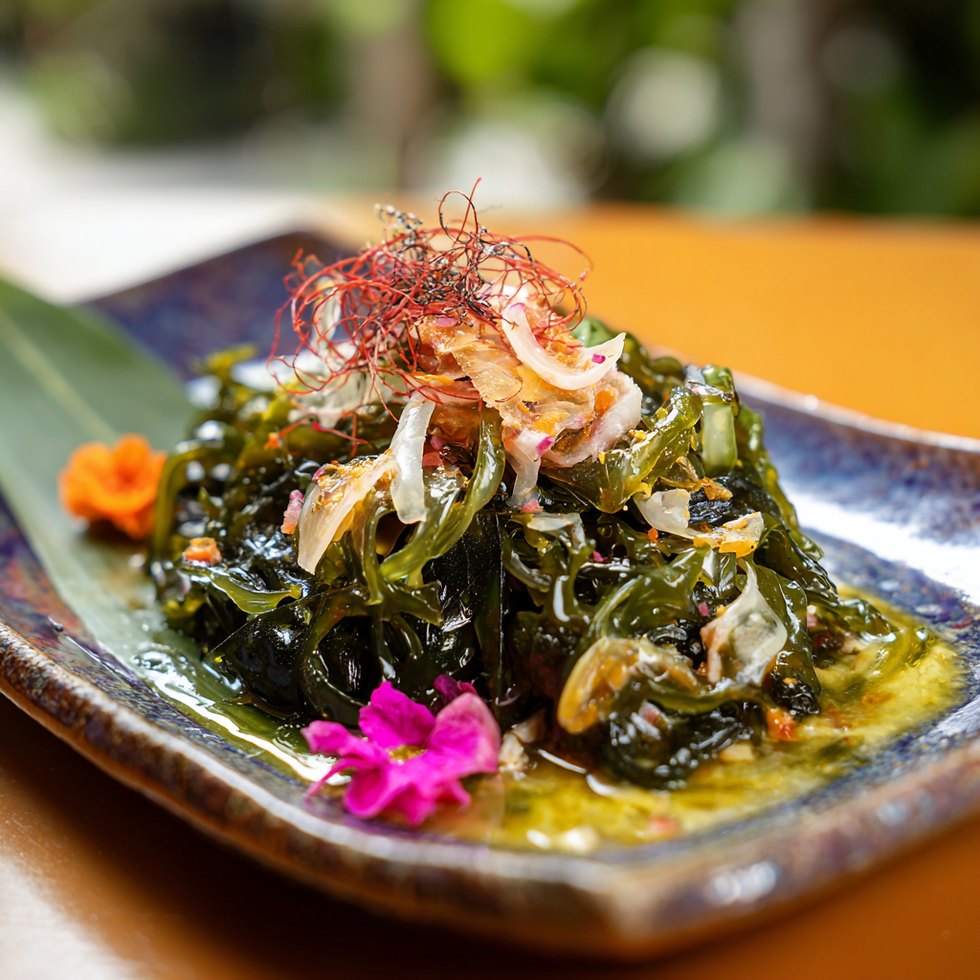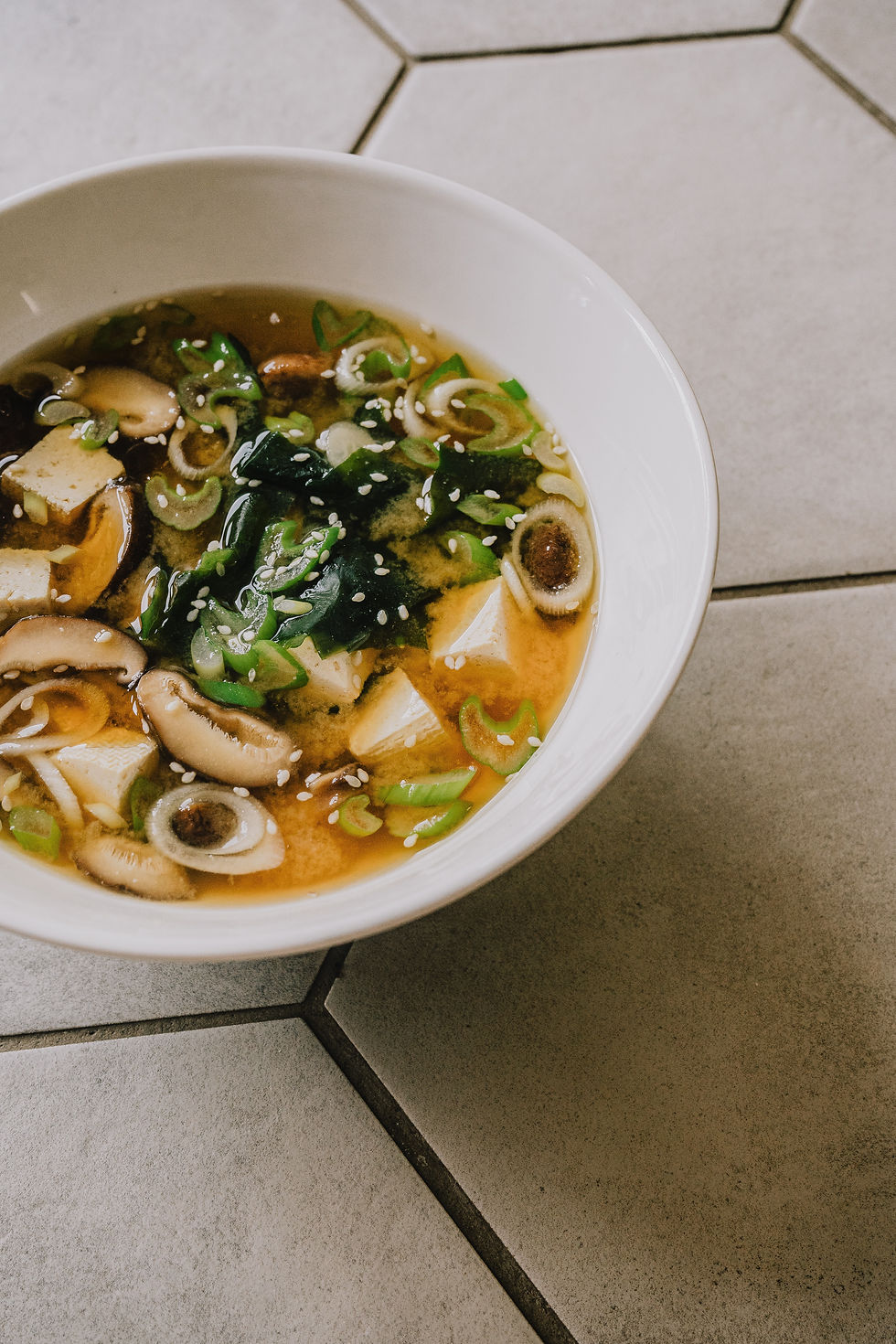A Beginner’s Guide to Cooking With Seaweed (Plus 3 Quick Ways to Try It Tonight)
- ER Kent

- 15 hours ago
- 3 min read
Once just sushi filler, seaweed is now a global pantry star—here’s how to harness its umami power, boost your nutrition, and cook with it like a pro

From sushi rolls to seaweed snacks, kelp noodles to dashi broth, seaweed is having a culinary renaissance—and for good reason. Packed with minerals, fiber, and savory depth, edible seaweed is one of the most nutrient-dense and sustainable foods on the planet.

But if your only experience with it is that one chewy strip inside a California roll, it’s time to dive deeper. Seaweed is incredibly versatile, surprisingly easy to use, and—when prepared right—downright delicious.
Here’s everything you need to know to start cooking with seaweed at home, plus three easy ways to try it tonight.

Why Cook With Seaweed at All?
Because it’s a nutritional powerhouse, a flavor enhancer, and a climate-friendly ingredient all in one.
According to researchers at Harvard T.H. Chan School of Public Health, edible seaweeds like nori, wakame, and kelp are excellent sources of:
Iodine, crucial for thyroid health
Calcium and magnesium
Vitamin K, folate, and B12 (especially in red seaweeds)
Prebiotic fiber that feeds healthy gut bacteria
Antioxidants like fucoxanthin, which may help reduce inflammation
And unlike most land crops, seaweed requires no soil, freshwater, or fertilizers to grow, making it one of the most sustainable foods we can eat, according to the World Wildlife Fund.

Types of Seaweed You’ll Want in Your Kitchen
You don’t need a marine biology degree to get started—just a few of the most versatile edible seaweeds:
Nori – Thin, dark-green sheets used in sushi rolls and snacks. Toasted for flavor.
Wakame – Silky, rehydrated seaweed used in miso soup and seaweed salad.
Dulse – A red, slightly smoky seaweed often used in flakes or as a bacon substitute.
Kombu – Thick, leathery kelp used to make savory Japanese broths (like dashi).
Arame – Fine, dark strands with a mild flavor. Often sautéed or tossed into salads.
Sea Lettuce – Bright green and delicate, great in soups or as a garnish.
The University of Maine’s Seaweed Guide offers a deep dive into these varieties and their culinary uses, along with sourcing tips for wild or farmed options.

3 Simple Ways to Try Seaweed Tonight
1. Make a Seaweed-Boosted Miso Soup Start with dashi broth (made from soaking kombu and bonito flakes), then whisk in white miso and add rehydrated wakame and soft tofu. It’s savory, comforting, and takes under 10 minutes.
If you're short on time, you can use instant dashi powder and pre-cut wakame, which you’ll find in the international aisle of most grocery stores or through Asian markets online.
2. Sprinkle Seaweed on Popcorn or Rice Crush toasted nori or use a furikake blend (a Japanese seasoning mix with seaweed, sesame, and salt) to add instant umami to popcorn, rice, avocado toast, or even scrambled eggs.
According to chefs interviewed by Bon Appétit, furikake is one of the easiest pantry upgrades you’ll ever make—and a gateway to loving seaweed’s savory side.

3. Toss a Seaweed Salad With Sesame and Citrus Rehydrate wakame or arame in warm water, then toss with soy sauce, rice vinegar, sesame oil, a dash of orange juice, and a sprinkle of sesame seeds. Top with shredded carrots or cucumbers for crunch.
This salad is a staple at Japanese restaurants, and once you make it at home, you’ll see why—it’s cool, tangy, briny, and addictive.

Tips for Buying and Storing Seaweed
Buy from reputable sources—look for organic or sustainably harvested labels.
Check for iodine content if you have thyroid issues—seaweed is potent.
Store dried seaweed in a sealed container in a cool, dry place. It lasts for months.
Rehydrate before using, unless it’s meant to be toasted or eaten crispy.
The Monterey Bay Aquarium’s Seafood Watch rates seaweed as a top-choice sustainable food, especially when harvested responsibly.

Seaweed Isn’t Just for Sushi Anymore
Cooking with seaweed isn’t about replicating restaurant sushi rolls—it’s about bringing a burst of umami, a dose of nutrition, and a whisper of the ocean into everyday meals.
Whether you're swirling kombu into soup, crumbling dulse over mashed potatoes, or blending nori into a pesto, seaweed brings depth, minerals, and that “I can’t stop eating this” factor to even the simplest dishes.












Opmerkingen